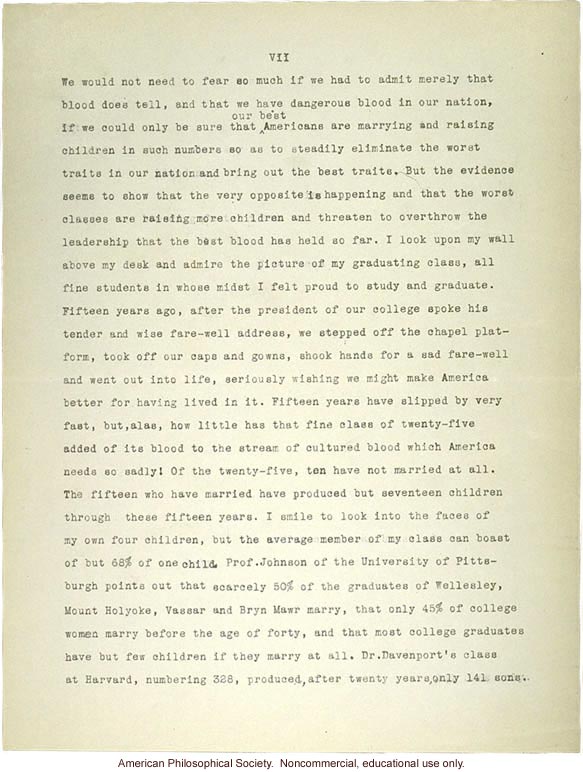[page number] VII [end page number]
We would not need to fear so much if we had to admit merely that blood does tell, and that we have dangerous blood in our nation, if we could only be sure that our best Americans are marrying and raising children in such numbers so as to steadily eliminate the worst traits in our nation and bring out the best traits. But the evidence seems to show that the very opposite is happening and that the worst classes are raising more children and threaten to overthrow the leadership that the best blood has held so far. I look upon my wall above my desk and admire the picture of my graduating class, all fine students in whose midst I felt proud to study and graduate. Fifteen years ago, after the president of our college spoke his tender and wise fare-well address, we stepped off the chapel platform, took off our caps and gowns, shook hands for a sad fare-well and went out into life, seriously wishing we might make America better for having lived in it. Fifteen years have slipped by very fast, but, alas, how little has that fine class of twenty-five added of its blood to the stream of cultured blood which America needs so sadly! Of the twenty-five, ten have not married at all. The fifteen who have married have produced but seventeen children through these fifteen years. I smile to look into the faces of my own four children, but the average member of my class can boast of but 68% of one child. Prof. Johnson of the University of Pittsburgh points out that scarcely 50% of the graduates of Wellesley, Mount Holyoke, Vassar and Bryn Mawr marry, that only 45% of college women marry before the age of forty, and that most college graduates have but few children if they marry at all. Dr. Davenport's class at Harvard, numbering 328, produced, after twenty years, only 141 sons.


